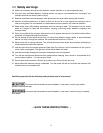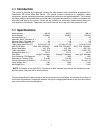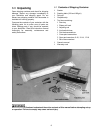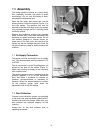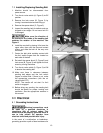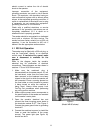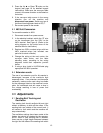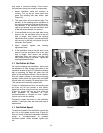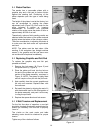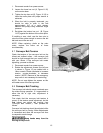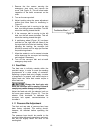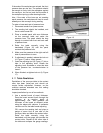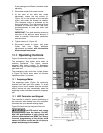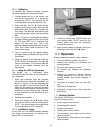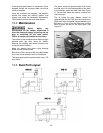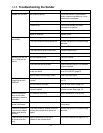
14
9.4 Platen Position
The sander has a removable platen with a
graphite strip and a felt pad to reduce friction
against the sanding belt. Positioning of the
platen depends upon the type of wood being
used.
The height of the platen is set at the factory, but
can be re-adjusted by rotating the platen
adjustment knob (Figure 10). Each mark on the
scale indicates a raising or lowering
measurement of 0.005mm. One complete
rotation of the scale moves the platen 0.2mm or
approximately 8/1000 of an inch.
Theoretically, optimum finish sanding results are
obtained when the bottom of the platen extends
slightly below the bottom of the conveyor rollers.
The main consideration in adjusting the platen is
to make sure that both ends are symmetrical
and level.
NOTE: The platen must be kept clean. After
sanding, if the workpiece has straight notches
across it, the graphite and felt pad have worn
out and should be replaced immediately.
9.5 Replacing Graphite and Felt Pad
To replace the graphite strip and felt pad,
proceed as follows:
1. Remove the lock screw (B, Figure 3) and
the spacer block (C, Figure 3).
2. Place the platen pull hook into the hole on
the end of the platen and pull out the lower
portion of the platen assembly, as shown in
Figure 10. NOTE: The platen is tightly fitted
and will require a firm pull with the pull hook.
3. Note carefully how the current graphite and
felt strip are mounted. Replace them with
the new ones.
4. Re-install the platen by aligning the end of it
with the dovetail track on the fixed portion of
the platen assembly, and push it all the way
in using the pull hook.
5. Replace the spacer block and lock screw.
9.6 V-Belt Tension and Replacement
For the first few days of operation a new belt
should be checked occasionally and adjusted for
tension as necessary until the belt is properly
“worn in.”
The v-belts on the main motor and table
elevating motor should be checked for proper
tension.
Tighten any of the v-belts as follows:
Figure 10
Figure 11
Figure 12



